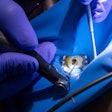High school athletes who play on sports teams smoke tobacco at a lower rate than nonathletes, but use smokeless tobacco more, according to a study by the U.S. Centers for Disease Control and Prevention (CDC).
Surveys show that while the current use of combustible tobacco products such as cigarettes and cigars dropped dramatically from 2001 to 2013 among all high school students (31.5% to 19.5%), the current use of smokeless tobacco remained unchanged among nonathletes (5.9%) and increased among athletes (10% to 11.1%).
Decreased use of cigarettes and cigars might result from athletes' awareness that smoking can hurt athletic performance, the CDC said. The higher use of smokeless tobacco suggests athletes may perceive these products as harmless, socially acceptable, or a way to boost athletic performance. However, smokeless tobacco contains nicotine and cancer-causing chemicals, and it may increase the risk of heart disease and stroke. Many athletes with a history of smokeless tobacco use have been diagnosed with or died from oral cancer.
Smokeless tobacco products, such as chewing tobacco, snuff, or dip, can cause cancer of the mouth, esophagus, and pancreas, noted CDC Director Tom Frieden, MD, MPH, adding that nicotine in these products is harmful to the developing brain.
He noted the effectiveness of tobacco-free policies in schools and other public recreational areas, saying the public should take action to keep children safe from the toxins.
The study, published in Morbidity and Mortality Weekly Report (September 4, 2015, Vol. 64:34, pp. 935-939), showed a relationship between the number of sports teams on which an athlete plays and their tobacco use. Athletes who play on many sports teams use smokeless tobacco more and combustible tobacco less, the CDC said.



















